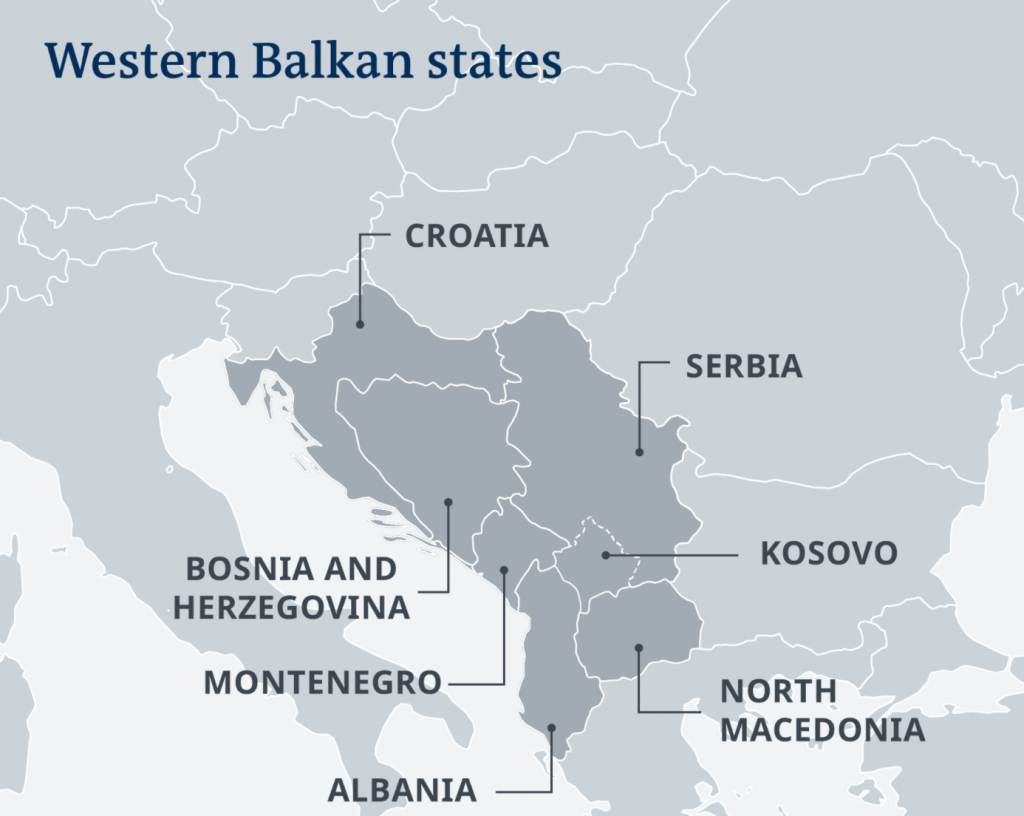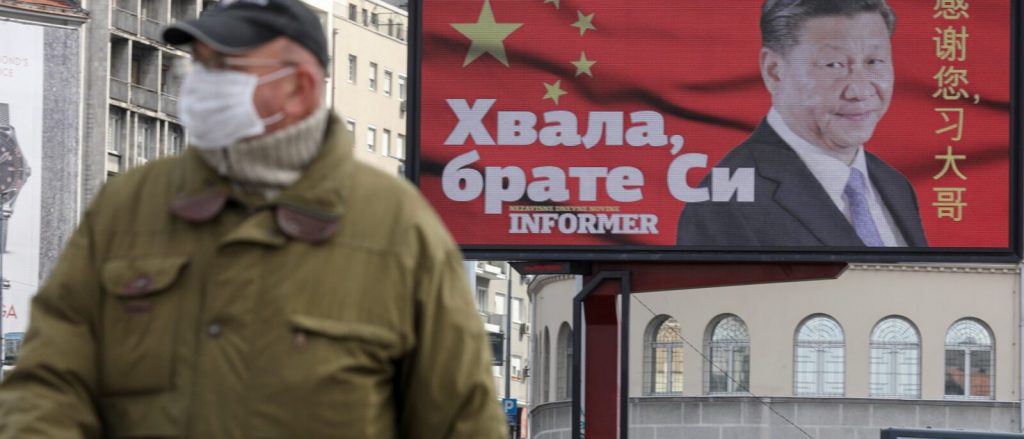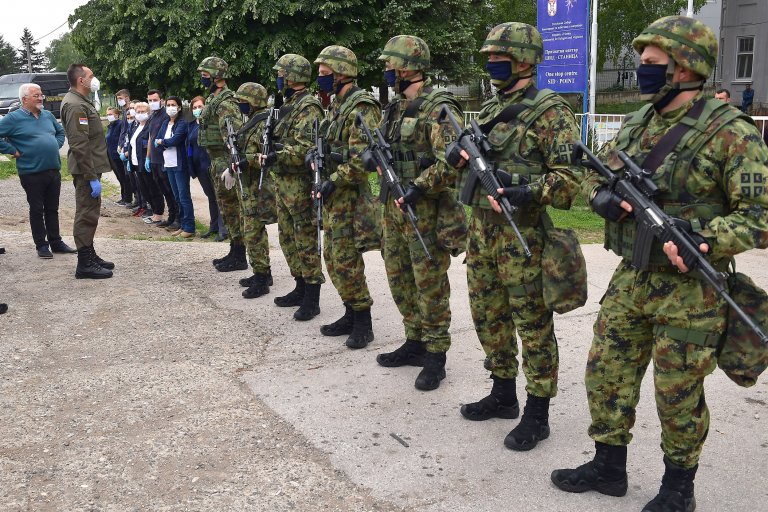China’s growing footprint in the Balkans has shifted from economic investments to deeper political and military engagement. A recent announcement that Serbian forces will participate in joint military drills on Chinese territory in 2025 marks a notable escalation in bilateral defense cooperation.
I. China’s Military Outreach to Serbia: Background and Intentions
- China has built its Balkans strategy on soft power, infrastructure investment, and digital diplomacy (e.g., Huawei 5G, surveillance systems in Belgrade). The new military dimension aims to consolidate strategic partnerships with key non-EU actors.
- Hosting military drills with Serbia allows China to:
- Showcase geopolitical reach in Europe.
- Signal to NATO and the U.S. that Beijing is no longer just a Pacific player.
- Test interoperability with non-aligned European militaries.
- Legitimize its model of “authoritarian-capable partnerships.”
II. Serbia’s Strategic Calculations: Why China?
- Serbia maintains a traditional defense relationship with Russia, but the war in Ukraine and logistical disruptions have reduced Russia’s ability to provide military hardware and training.
- China offers:
- Advanced military technology without political conditionality.
- Access to UAVs, surveillance systems, and cyber warfare tools.
- Political support at the UN Security Council on Kosovo.
- Serbia likely views China as a complementary or alternative defense partner to Russia, hedging against Western pressure and Moscow’s weakening position.
III. Strategic Risks for the Region and the European Union
1. Undermining EU Integration Frameworks
- Serbia is a candidate for EU membership, yet its deepening defense ties with China contradict the EU Common Security and Defence Policy (CSDP).
- This may lead to sanctioning or freezing of EU accession talks.
2. Chinese Strategic Entrenchment
- China gains a foothold in the European defense ecosystem.
- Through Serbia, Beijing can indirectly test EU security infrastructure and vulnerabilities.
3. Destabilization of the Balkans
- Military cooperation with a non-democratic superpower could embolden Serbian nationalist ambitions, especially regarding Kosovo.
- Neighboring states may perceive this as a security imbalance, triggering an arms race or new alignments.
IV. Who Drives Serbian-Chinese Military Cooperation?
- Aleksandar Vučić, Serbia’s President, is the central architect of this pivot. His foreign policy rests on balancing East and West to maximize autonomy.
- Defense Minister Miloš Vučević has signed several defense MOUs with China, including technology transfer and training agreements.
- Key Serbian institutions:
- Military Technical Institute: Facilitates cooperation in drone and missile tech.
- Security Intelligence Agency (BIA): Coordinates with Chinese counterparts on counterterrorism and cyber defense.
Motivations:
- Strategic hedging: Avoid full dependency on the EU or NATO.
- Domestic propaganda: Present Serbia as globally relevant and militarily autonomous.
- Defense modernization: Access to Chinese drones (e.g., Wing Loong II) and electronic warfare systems.
V. Outlook: A Balkan Chessboard for Great Powers
- The Balkans are once again becoming a battleground of influence among the U.S., EU, China, Russia, and Turkey.
- Serbia’s moves may provoke:
- Increased NATO presence in Bosnia and Kosovo.
- Greater scrutiny from Brussels and potential conditionality on funding.
- A pushback from neighbors like Croatia and Montenegro.
Serbia’s deepening military ties with China mark a new phase in Beijing’s strategic advance into the Balkans. While Serbia seeks to modernize its military and diversify partnerships, the long-term risks include regional instability, EU alienation, and the erosion of Euro-Atlantic norms. The evolution of this relationship should be closely monitored by Western policymakers as a potential flashpoint in the geopolitical reshuffling of Southeast Europe.
China’s goals for military cooperation with Serbia reflect a combination of geopolitical, strategic, and economic interests. Here’s a breakdown of Beijing’s key aims:
1. Expanding Strategic Influence in Europe
- Balkan Gateway: Serbia is China’s main partner in the Western Balkans under the Belt and Road Initiative (BRI). Military cooperation complements economic penetration and helps entrench China’s long-term presence.
- EU Bypass Leverage: Serbia, not being an EU member but aspiring to join, offers China a means to influence EU-adjacent space without regulatory constraints.
2. Undermining Western Military Architecture
- Counterweight to NATO: By strengthening military ties with Serbia—a militarily neutral country surrounded by NATO states—China seeks to test and dilute NATO’s influence in Southeast Europe.
- Disrupting U.S. Leverage: This cooperation helps China support non-aligned partners and promote a multipolar security architecture that contrasts with U.S.-led models.
3. Promoting Chinese Defense Exports and Technology
- Arms Market Expansion: Serbia has purchased Chinese drones (like the CH-92A), air defense systems, and surveillance tech. China uses Serbia as a testbed and showroom for its weapons in Europe.
- Tech Penetration: By providing advanced systems, China embeds its military-industrial standards in Serbia’s defense sector.
4. Intelligence and Surveillance Gains
- Dual-use Technology Installations: Cooperation allows China to deploy surveillance tech (e.g., facial recognition systems) that have military intelligence potential.
- Cyber and Strategic Access: Military links may facilitate cyber cooperation, giving China indirect access to Western security paradigms in a semi-European context.
5. Diplomatic Symbolism
- Anti-hegemonic Signaling: Public military drills or arms transfers serve as a message of solidarity among authoritarian-leaning regimes and a rebuke of Western pressure.
- Soft Balancing of Russia: China’s deeper role in Serbia counters Russia’s historical military influence in the region, showing Beijing’s ability to offer alternative strategic partnerships.
6. Taiwan and Global Norms Leverage
- Political Loyalty in UN and Global Forums: Serbia often supports China’s positions on Taiwan and Hong Kong. Military cooperation deepens this alignment in global institutions.
- Norm Erosion: Cooperation helps normalize Chinese security practices in Europe, including non-transparent arms deals and authoritarian surveillance.
Military drills between China and Serbia can take several forms, each with distinct geopolitical implications. Below are key scenarios, ordered by scale, purpose, and potential consequences for the region and beyond:
Scenario 1: Counterterrorism and Urban Warfare Training
Format: Joint exercises simulating anti-terror ops, hostage rescue, and urban combat.
Location: In China, likely in Xinjiang or Inner Mongolia; or symbolically in Serbia’s south.
Purpose:
- China showcases military professionalism and counterterror doctrine.
- Serbia gains exposure to modern tactics and equipment.
Implications:
- Low political risk.
- Aimed at “non-traditional” threats.
- Sets precedent for more complex drills.
Scenario 2: Drone and Air Defense Coordination Drills
Format: Exercises involving Chinese-supplied drones (like CH-92A) and Chinese radar/air defense systems.
Location: Likely in Serbia (e.g., Batajnica or Niš air base).
Purpose:
- Enhance interoperability of Chinese tech with Serbian forces.
- Promote Chinese weapons to other Balkan clients.
Implications:
- NATO concerns over Chinese tech embedded in European airspace.
- Potential intelligence-sharing concerns with Russia or China.
Scenario 3: Simulated Hybrid Warfare Exercises
Format: Joint scenarios including cyber warfare, information operations, and electronic jamming.
Location: China or remote Serbian command centers.
Purpose:
- Enhance Chinese-Serbian understanding of “non-kinetic” conflict methods.
- Allow China to test capabilities in a European-style environment.
Implications:
- Raises alarms in Brussels and Washington.
- Suggests coordination in grey-zone conflict models.
Scenario 4: Strategic Mobility and Rapid Deployment Drills
Format: Chinese forces simulate rapid deployment to Serbia (airlifted or via rail/air logistics drills).
Location: China to Serbia or vice versa.
Purpose:
- Test long-distance coordination.
- Signal China’s global reach, especially in EU periphery.
Implications:
- Highly symbolic of Chinese power projection.
- Would cause major NATO concern about militarization of the Balkans.
Scenario 5: Multilateral “Peacekeeping” Drill in the Balkans
Format: Joint China-Serbia-led drill, possibly including other friendly nations (e.g., Hungary, or Russia in observer role).
Location: Serbia or neighboring neutral zones.
Purpose:
- Rebrand military cooperation as peace-oriented.
- Position China as a stabilizing actor in Europe.
Implications:
- Masks military buildup under humanitarian pretext.
- Could provoke Western diplomatic pushback.
High-Risk Wildcard Scenario: Naval/Air Component Simulation in the Mediterranean
Unlikely but Possible
- Serbia coordinates with Chinese forces during a Chinese naval presence in the Mediterranean.
- Symbolic long-range strike or surveillance simulation.
Strategic Shock Value:
- Portrays China as able to militarily support allies on NATO’s doorstep.
Serbia may hope to use its deepening military and strategic ties with China to gain leverage on the Kosovo issue, but this strategy faces significant limitations. Here’s a breakdown:
Why Serbia Sees China as a Potential Ally on Kosovo:
- Chinese Support at the UN:
China has consistently supported Serbia’s stance on Kosovo’s non-recognition in the United Nations Security Council, often aligning with Russia to block moves favoring Kosovo’s independence. - “One China” Principle Parallel:
Serbia draws a parallel between China’s claim over Taiwan and its claim over Kosovo, reinforcing mutual support for territorial integrity narratives. - Geostrategic Balancing Tool:
As Serbia faces pressure from the EU and U.S. to normalize relations with Kosovo, Beijing offers Belgrade an alternative diplomatic axis.
Limits to What China Can Do for Serbia in Kosovo:
- No Military Involvement Likely:
China is unlikely to directly support Serbia in any military or paramilitary confrontation over Kosovo. Beijing avoids entanglement in high-risk European security flashpoints. - Economic and Diplomatic Pressure Only:
China may provide diplomatic backing or economic incentives (e.g., infrastructure investment) to boost Serbia’s domestic standing, but won’t confront NATO or EU policies head-on. - China Avoids Alienating EU:
Beijing seeks stable ties with the EU—its major trading partner. Open support for a Serbian confrontation in Kosovo would damage China’s European agenda.
Risks and Miscalculations:
- False Security:
Belgrade could overestimate the extent of Chinese backing, risking escalation without a reliable safety net. - Increased EU and NATO Pushback:
Using China in the Kosovo issue could deepen mistrust between Serbia and the West, slowing EU integration. - Undermining Regional Stability:
China’s involvement, even symbolically, could embolden other non-Western actors (like Russia) to stir tensions in the Balkans.
Conclusion:
While China offers Serbia diplomatic cover and geopolitical balancing, it is not a viable military partner in the Kosovo dispute. Belgrade may try to use the relationship for leverage, but actual support from Beijing will remain limited to rhetoric, symbolic gestures, and selective economic cooperation.

More on this story: China: Europe through the Balkans

More on this story: China Fights for Central and Eastern Europe Expansion

More on this story: New arms race as deterrent in Balkans neighborhood relations




